If there’s ever been an entity that that can soundly respond to Edwin Starr’s chest-thumping question of “War, huh, what is it good for?!” it’s Hollywood. For nearly as long as there’s been a Hollywood, war has been its muse; a skeletal beauty, hands and feet stained crimson past wrist and ankle by gory deeds and passage, fanning the sparks of creativity. Some of the greatest films ever made have been war movies, those classics that thrill adrenally as much as they use the horrors of war to lay bare the human condition as few other genres can. And now joining those august ranks is 1917.
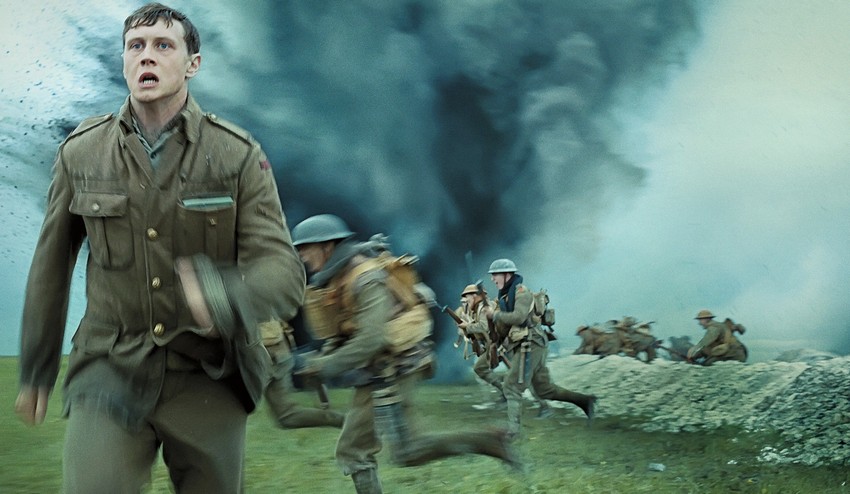
Directed and co-written by Sam Mendes, this film is, at its core, a simple tale inspired partially by a real-world account given to a young Mendes by his veteran grandfather Albert: It is the eponymous 1917, a little more than halfway into the First World War. On the Western Front in Northern France, British forces have routed the local German presence, sending them scampering. The soldiers of the British 2nd Battalion of the Devonshire Regiment are in hot pursuit, readying for one final push to stamp out their fleeing prey. But as new aerial intelligence shows, the Germans aren’t running in fear, they’re withdrawing tactically to lull their pursuers into an ambush of mortar and machine-gun that will see the British forces eradicated.
With telephone lines down, British command tasks young Lance Corporals Tom Blake (Dean-Charles Chapman) and Will Schofield (George MacKay) with a critical mission: Race against the clock, on foot over battlegrounds still contested, to hand-deliver orders to the 2nd Battalion to stand down. If Blake and Schofield fail to stop the 2nd Battallion’s attack in time, over 1600 young men will be hurtling headlong to their deaths, Blake’s older brother among them. And thus kicks off a trek across horror landscapes of craters and barbed wire, blood and bone, that will see the young men test not just their physical capabilities but their hearts as well.
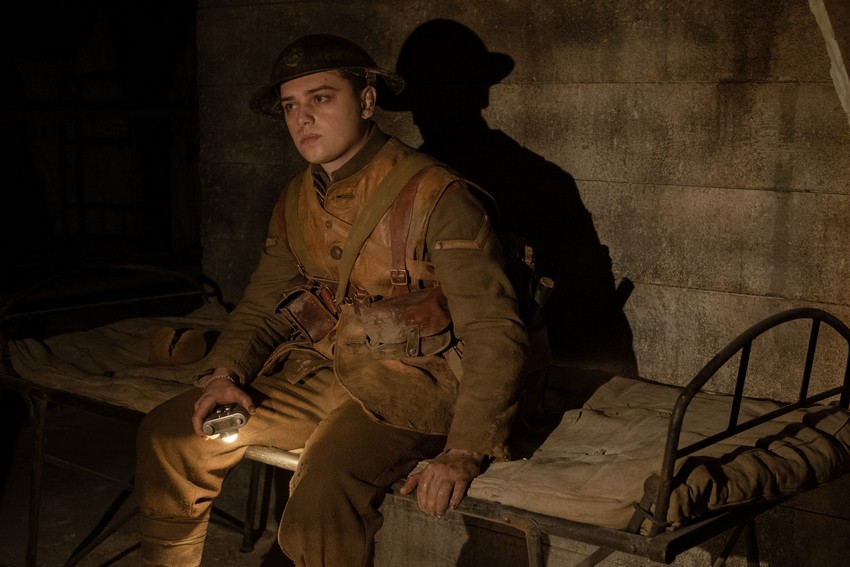
Spectre, Mendes’ previous film, was a sodden entry in the James Bond franchise, but few can deny the marvel of its opening sequence: A four-minute-long single-take shot (actually six shots cleverly stitched together) set in the festive chaos of Mexico’s Day of the Dead. What Mendes accomplished in that opening sequence though is (pun fully intended) a spectre of what he does in 1917.
Escalating exponentially in ambition, Mendes has filmed the entirety of 1917’s two-hour running time as a single take shot, our POV never veering away from the burdened shoulders and desperate visages of Blake and Schofield. And with that relentless voyeurism, the legendary Roger Deakins transforms from cinematographer to warlock as his camera tracks, swoops, and flies in, around, and through places where cameras should simply not be able to exist. Pay close attention and you will on occasion be able to spot the metaphorical tape where a sequence of long takes was stuck together as one (conspicuously dark moments, slightly iffy character CGI, etc), but even those odd tells are not enough to detract from this achievement.
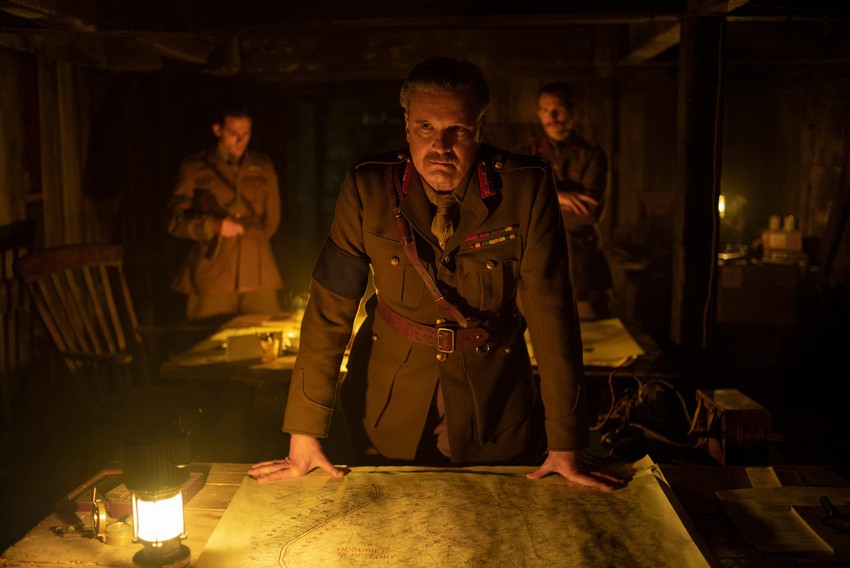
War movies, with their myriad moving parts of characters, sets, and pyrotechnics are a challenge at the best of times. The pure logistics of what Mendes has pulled off here boggles the mind as much as it awes it. But this not simply gimmicky technical braggadocio for the sake of it.
By adopting this single-take format, Mendes forces the audience to bear excruciating witness to Blake and Schofield’s every dread-filled step, almost never getting the emotional respite of a cut in events. Battles and their gory aftermath play out in real-time, with Mendes even employing jaw-dropping digital trickery to show characters go through the stages of death in front of our eyes. With tension and emotion ratcheted up to spine-contorting levels – the torture wheel urgently, relentlessly turned by Thomas Newman’s pounding score – the result is unblinking fixation.
The camera never looks away from these soldiers, so you can’t either, no matter how frayed your nerves. Even when the duo is not in the thick of the action, Mendes and co-writer Krysty Wilson-Cairns’ rich script give Chapman and MacKay some meaty dramatic material to chew on and keep engagement high. And the young actors bite deep, their thespian efforts every bit as impressive as the rest of the framework around them.
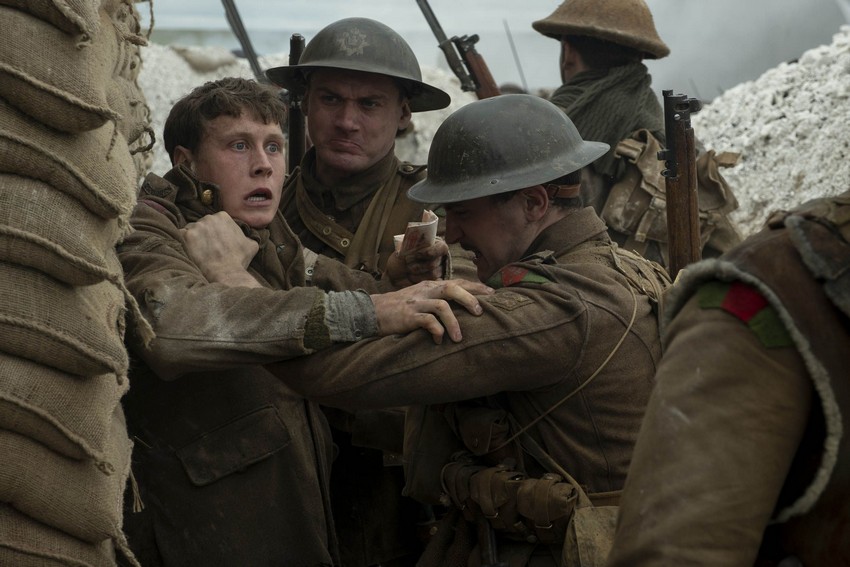
While there’s a cavalcade of recognizable faces (Benedict Cumberbatch, Colin Firth, Mark Strong, etc), this is Chapman and MacKay’s show. Chapman’s Blake is all determined idealism and stoic bravery, still young enough to believe that age-old lie of dulce et decorum est pro patria mori despite the muddy horrors around him, and the erstwhile Game of Thrones actor sells it wonderfully. But it’s relative newcomer MacKay, as the slightly older, much more jaded Schofield, who is a revelation here. Dragged along on what he believes to be a suicide mission in which he has no personal stake, Schofield doesn’t want to be there even though he is honour bound to help his friend. And MacKay, through every bone-weary action, every emotionally-boiling gaze, makes you believe him. His personal story, as he comes to terms with the role he needs to play in this theatre of war, is stunning. This is star-making stuff.
Mendes puts these two men through the wringer as they encounter everything from breathless dashes across cracked, steaming, No Man’s Land or frantically avoiding enemy snipers through rivers and buildings. And through it all, Deakins does some of the greatest cinematography work in his already unfathomably great career, turning every frame into a painting. One particularly arresting sequence sees the pitch-dark rubble of a blown-up town in which a game of desperate cat-and-mouse is played out by our heroes and the occupying Germans transformed into an alien landscape by the blinding white light of phosphorus flares. It’s a scene that by itself, in composition, pacing, acting, and execution, surpasses just about everything I saw on screen last year.
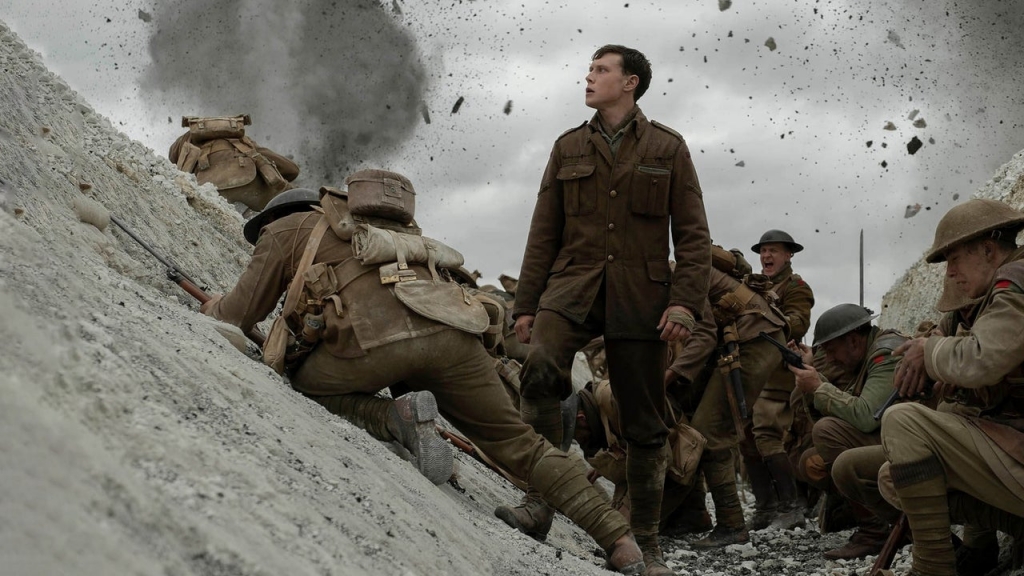
What Mendes and co have done here is not just filmmaking, this is architecture: engineering in service of art, art in service of engineering. The result is a towering monument of the genre. 1917 is the type of film that film-school scholars will pore over with archaeological fervour and wonder in years to come. It’s a masterpiece.
Last Updated: January 17, 2020
| 1917 | |
|
1917 is a cinematic masterpiece in every sense of the word. What director Sam Mendes and cinematographer Roger Deakins has done here is marry technical miracle with raw human art on a transcendent level, giving us not just one of the greatest war films ever made, but probably the best you will see this year.
|
/10
|
|---|---|
|
78/
100
|
|






















RinceThis
January 22, 2020 at 11:33
Movie of the year. Phenomenal. There were parts that nearly had me in tears with how well made they were. Stunning.
Pieretto
January 26, 2020 at 01:22
Watched it today, review is right, this movie is a masterpiece, hats off to the people involved.